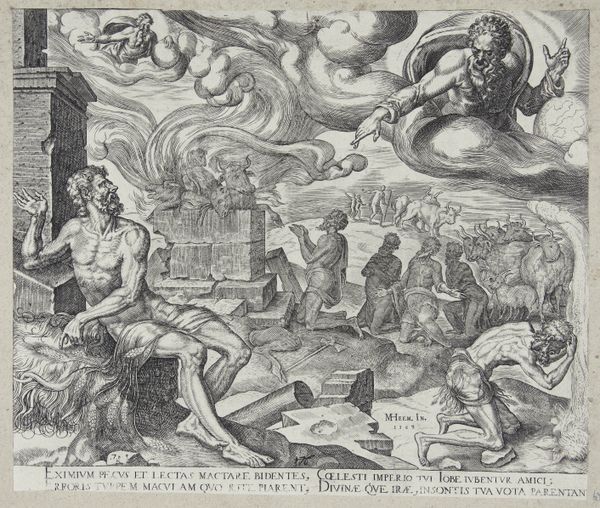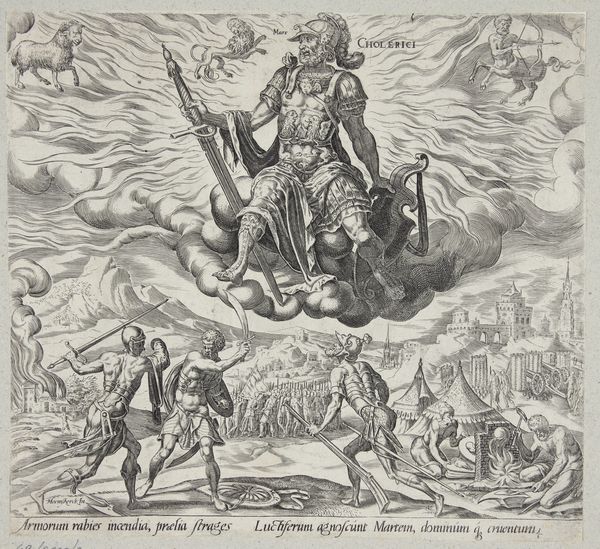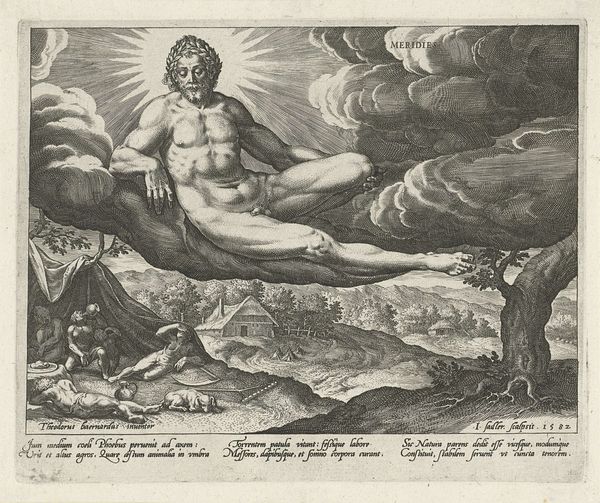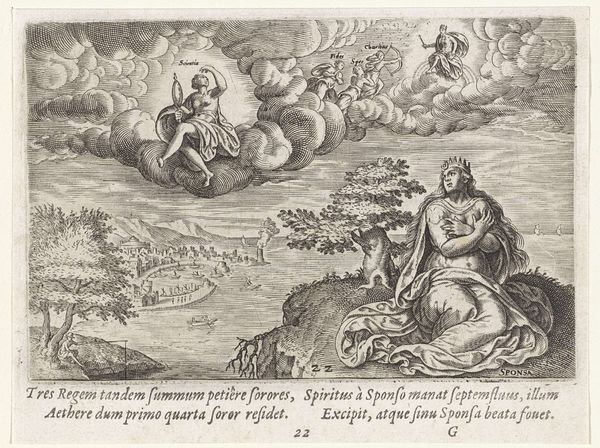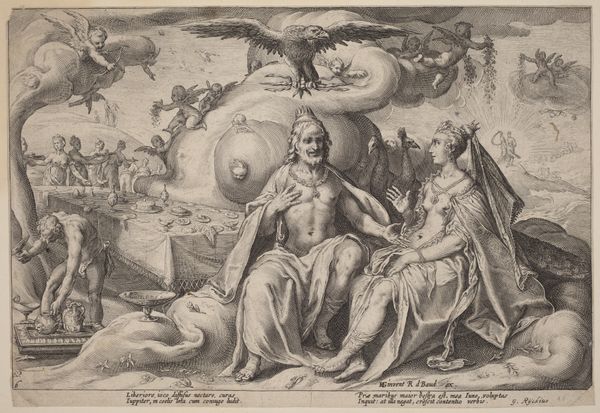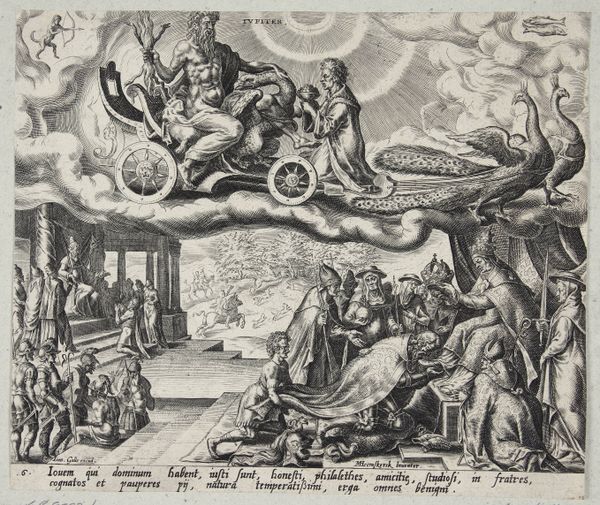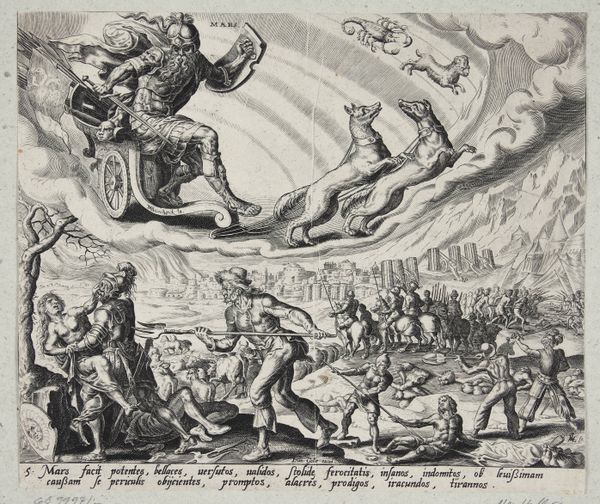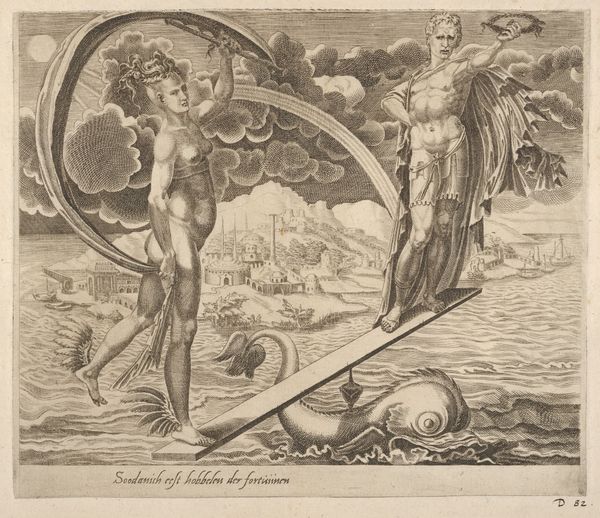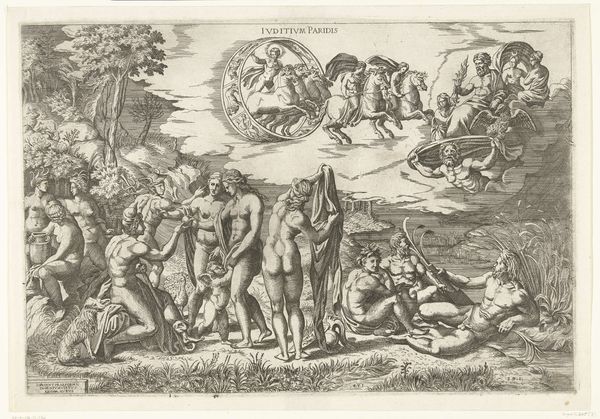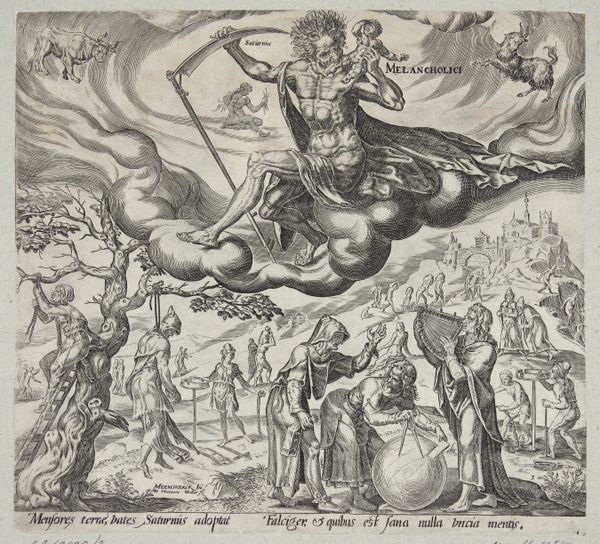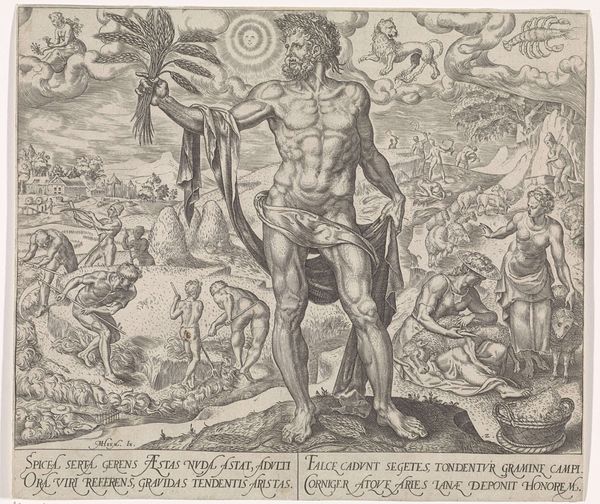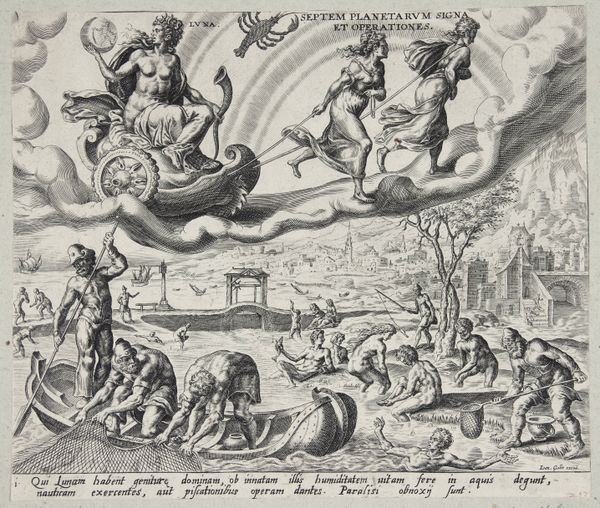
print, engraving
#
allegory
# print
#
landscape
#
mannerism
#
figuration
#
history-painting
#
engraving
Dimensions: 215 mm (height) x 235 mm (width) (monteringsmaal), 215 mm (height) x 233 mm (width) (bladmaal)
Curator: Harmen Jansz. Muller's "The Phlegmatic Temperament," an engraving dating back to 1566. A fascinating dive into mannerist allegory, wouldn’t you agree? Editor: Indeed. My initial reaction is that this is a world teeming with life, and yet, beneath it all, there's this pervading sense of...sluggishness? Like a body heavy with sleep. Curator: Sluggishness is a fair assessment. The piece employs figuration heavily; we see Luna dominating the sky on a cloud, various aquatic animals and water-based activities playing out across a landscape beneath. These are meant to embody phlegm as one of the four classical humors. Editor: It's interesting how water—traditionally seen as fluid, adaptable—is presented here as almost stagnant. Note how the palette feels very restricted in blacks and whites; like water color illustrations left outside and now very faded from heavy light exposure. Curator: Quite, there's a lack of dynamism, isn't there? That's typical for phlegmatic associations! And Muller, of course, using the visual language of his time – the allegorical figures, the busy scene, everything contributes to communicating a certain psychological profile through imagery. Editor: The use of Luna, or the moon, ties into that. It’s no accident – the moon's association with tides, the unconscious, dreams… This woman atop a cloud, her gaze turned inward, evokes this kind of internal world where emotions are dulled, even if everything moves down below. It carries that emotional and cultural weight, that phlegm is this state of being calm to an excess of apathy and slowness. Curator: It’s quite remarkable how effectively Muller conveyed such a nuanced state through seemingly simple pictorial elements. Look closely – the details are so finely wrought, especially for an engraving. Editor: And considering its time, that moment in history with new advances and means for imagery dissemination. To see such a specific focus is noteworthy: Muller gives phlegm symbolic form; this, I'd argue, tells us as much about sixteenth-century anxieties as it does about humors. Curator: I think that encapsulates our experience, right? A deep dive into symbols offering unique glimpses into our shared past, the emotional resonance of imagery persisting through centuries. Editor: Agreed. Who knew phlegm could be so stimulating to the mind, really?
Comments
No comments
Be the first to comment and join the conversation on the ultimate creative platform.

